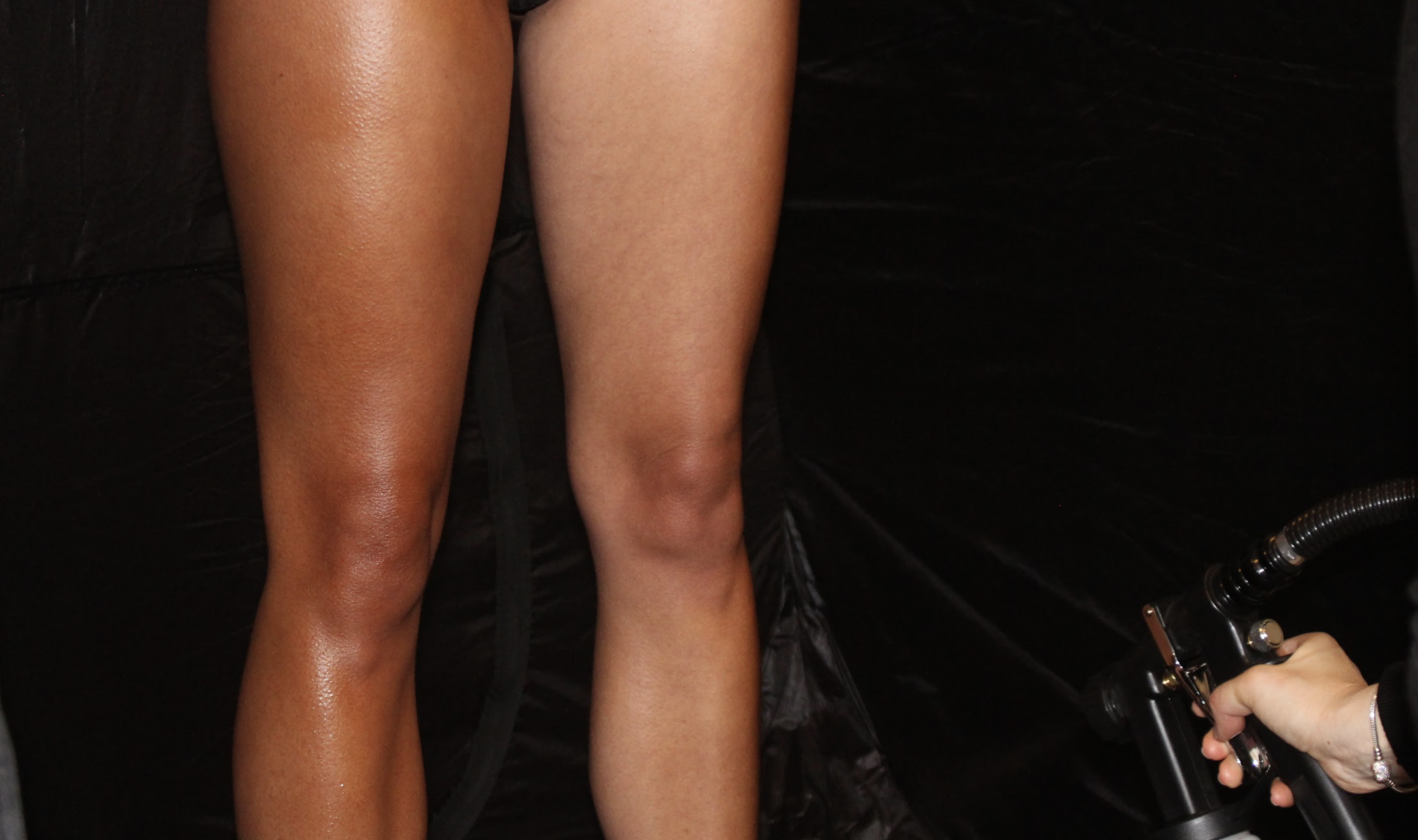The Difference Between A Spray Tan And Sunbed
By Jennie Waeland, November 16 2020

It can feel like a shock to the system when summer rolls around and we notice just how pale our skin has been after the colder months. Ditching the layers for shorts, skirts and dresses can feel a very daunting transition.
When it comes to a quick tanning fix, we often hear people talking about either spray tans or sun beds to achieve a bit of colour.
Beauty treatments can feel overwhelming if you don’t know the facts. What is this difference? Which is better for my skin? Which is more expensive?
We have broken down everything you should know about spray tans and sunbeds. Keep reading for the full break-down and comparisons between the two methods of tanning.
What is the process?
Spray Tan: You will be asked to wear loose, dark clothing to the appointment. Make sure that you have removed all makeup and that your hair is tied up. The therapist will ask you to strip down to your underwear. They will have a pop-up tent structure that you will stand in and the spraying process will begin.
Sunbed: Sunbeds are usually located in tanning or beauty salons. The beds come in three varieties. You can choose to tan in your bikini or in the nude. If you choose the latter, be sure to try to protect more sensitive areas such as the bikini line and chest.
You will be given a pair of goggles to wear during the process to protect your eyes. Do not take these off whilst on the sunbed.
A ‘Low Pressure Bed’ is the most traditional style, emitting UV rays on a similar spectrum to sunlight. High pressure beds emit a higher frequency of UVA rays. The difference between UV and UVA is that UVA rays penetrate deeper into the skin.
Finally, a ‘Tanning Booth’, otherwise known as ‘Stand Up Bed’, is a booth in which you can change the position you are in in order to get an even tan all over your body.
How long does it take?
Spray Tan: A spray tan appointment should take around 15 minutes, for the full body. Please allow half an hour for the equipment to be set up.
Sunbed: If you are new to sunbeds, it is recommended to tan twice a week for no more than 6 minutes. No matter what your skin type is, you shouldn’t exceed over 6 minutes. Once you have built a gradual tan, you do not need to use the sunbeds as often.
How long will it last?
Spray Tan: Spray tans tend to last between 5 to 10 days, depending on the shade you’ve chosen. A lighter tan will fade more quickly than a darker one.
There are several ways in which you can help to keep your tan lasting longer. Exfoliate before the appointment to remove any potential blocking from dead skin cells. This will reduce streakiness.
The same goes for hair removal. A shave or wax is recommended prior to the appointment so that you don’t risk removing any tan afterwards. Keeping moisturised regularly is crucial to maintaining a tan. It will prevent any premature fading and help to keep your skin feeling glowy.
For a more permanent tan, you will need to keep topping your tan up via appointments.
Sunbeds: Once again, this will depend on how light or dark you have chosen to have your tan. The condition and health of your skin will also contribute to its longevity. With a lighter tan, it will likely fade after 1 or 2 weeks. With a darker tan, you can expect it to last up to 4 months.
Did you know that your epidermis (top skin layer) has a cycle of 28 days whereby it will shed? If you want to keep a lasting tan, you will have to top up after this amount of time.
Will it harm my skin?
Spray Tan: No, a spray tan is often seen as a safe alternative to sunbathing or sunbeds. Unlike those two, it involves no interaction with UV rays. It is simply the reaction between the natural color additive (DHA) and the amino acids found on the epidermis layer.
Sunbeds: Unfortunately, sunbeds are deemed as potentially harmful to your skin as you are exposed to UV and UVA rays. UV rays can be harmful as they can cause damage to your skin cells, evoke premature wrinkles and aging, liver spots and can increase risk of skin cancer if exposure is severe.
Is it waterproof?
Spray Tan: You can shower 6-8 hours after your appointment, as this gives your skin enough time to absorb the tan. Whilst swimming with a spray tan is permitted, the interaction with chlorine can lead to your tan fading more quickly.
Sunbed: As the procedure relies on UV rays, your tan will not fade with water interference. This means that you can shower as soon as you’d like.
How much is it?
Spray Tan: At LeSalon, our spray tan services vary between £40-£50. You can view our treatments here.
Sunbed: Prices will vary depending on how long your session is and where you book. Roughly, a 10 minute session can cost up to £10. This can be a costly procedure if you are a regular customer.
To summarise, both spray tans and sunbeds are effective methods to achieve a tan. A sunbed tan will last slightly longer and is a quicker procedure, however it can pose a threat to the health of your skin. It is up to you whether you take this risk. Despite the slightly quicker fading time, a spray tan is slightly cheaper in the long run and is a much more natural approach to a fake tan.



